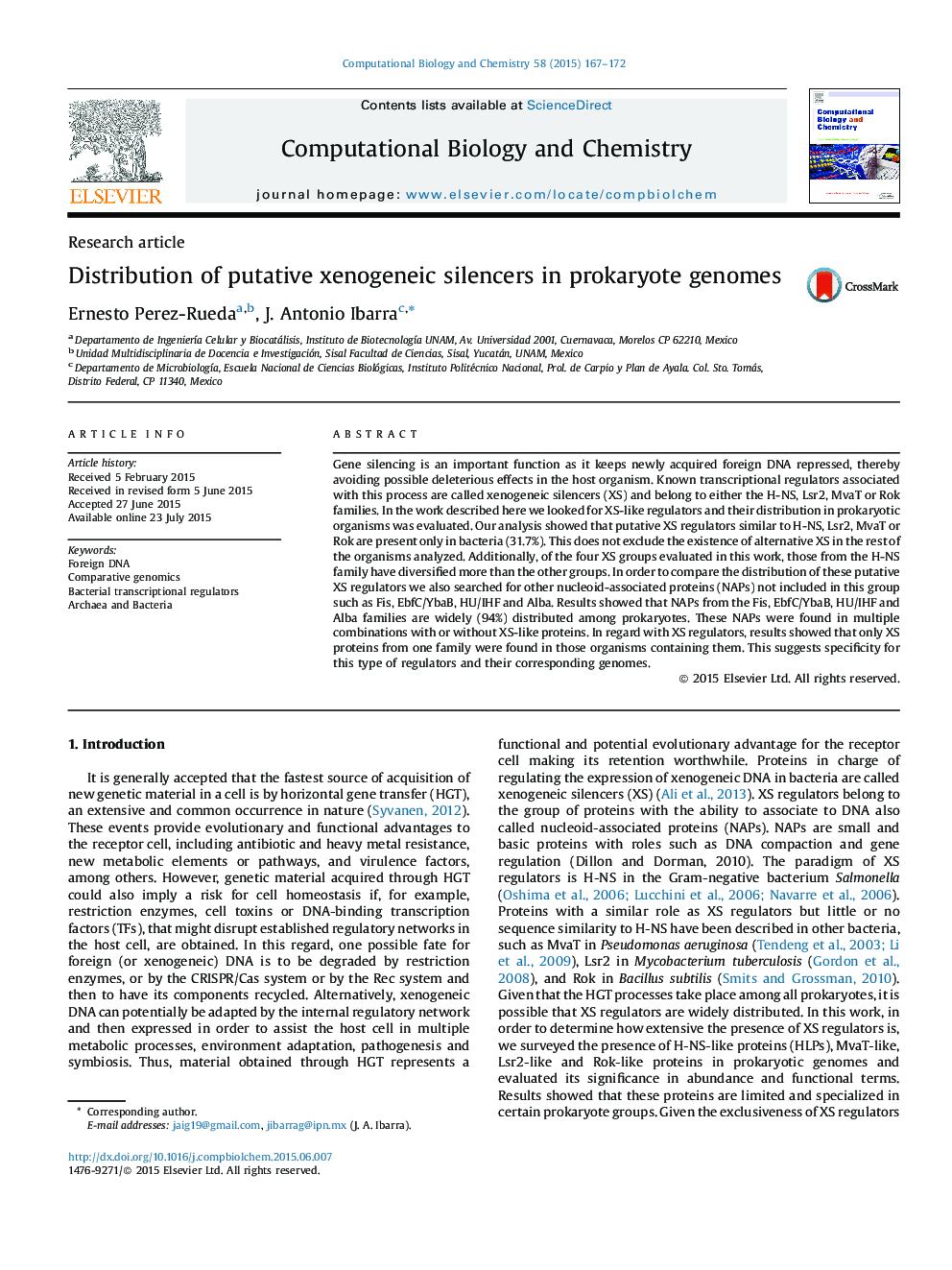| Article ID | Journal | Published Year | Pages | File Type |
|---|---|---|---|---|
| 15016 | Computational Biology and Chemistry | 2015 | 6 Pages |
•Xenogeneic silencer-like regulators were searched in fully sequenced prokaryote genomes.•Putative xenogeneic silencer regulators are limited to some bacteria and are specific for each division.•Xenogeneic silencer regulators from the H-NS family are the most diversified.•Other nucleoid-associated proteins were also searched and their distribution was also assessed.•Our search updates and extends xenogeneic silencer regulators database.•Results showed that xenogeneic silencer-like regulators are specific for the bacteria they are found in and exclusive, as members of the other families are excluded.
Gene silencing is an important function as it keeps newly acquired foreign DNA repressed, thereby avoiding possible deleterious effects in the host organism. Known transcriptional regulators associated with this process are called xenogeneic silencers (XS) and belong to either the H-NS, Lsr2, MvaT or Rok families. In the work described here we looked for XS-like regulators and their distribution in prokaryotic organisms was evaluated. Our analysis showed that putative XS regulators similar to H-NS, Lsr2, MvaT or Rok are present only in bacteria (31.7%). This does not exclude the existence of alternative XS in the rest of the organisms analyzed. Additionally, of the four XS groups evaluated in this work, those from the H-NS family have diversified more than the other groups. In order to compare the distribution of these putative XS regulators we also searched for other nucleoid-associated proteins (NAPs) not included in this group such as Fis, EbfC/YbaB, HU/IHF and Alba. Results showed that NAPs from the Fis, EbfC/YbaB, HU/IHF and Alba families are widely (94%) distributed among prokaryotes. These NAPs were found in multiple combinations with or without XS-like proteins. In regard with XS regulators, results showed that only XS proteins from one family were found in those organisms containing them. This suggests specificity for this type of regulators and their corresponding genomes.
Graphical abstractFigure optionsDownload full-size imageDownload as PowerPoint slide
